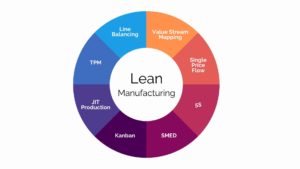The healthcare landscape is changing across the country as it becomes more and more difficult to run a high quality healthcare system and keep costs down.
What is Lean Healthcare?
Lean healthcare is the application of lean principles to the whole value chain of patient care.
This is a new approach whereby we think of the value added activities that contribute to wellness. But mapping the patient journey is not easy.
When is a person satisfied that they are healed? Is it when they get relief from taking medication after diagnosis?
The path from illness to wellness is complicated. People involved in healthcare must be focussed and dedicated.
Imagine a scenario whereby you have been diagnosed with an illness that requires surgery. The actual surgery is the value added activity.
If you have to to through an appendectomy, anything outside this activity can only be Muda, Mura or Muri.
Mu..what??? For those unfamiliar with Kaizen and lean manufacturing, these Japanese terms may be unfamiliar. So let me summarize and get you up to speed on what they mean.
Muda is a Japanese word that means waste. Any activity that does not have value is waste in lean.
Mura is another Japanese word used a lot in lean manufacturing. It means variation or inconsistency in the work place.
Still another term used in Kaizen is Muri. This word is used to describe situations where there is unnecessary strain on people and machines.
Patient flow
When we go to hospital to seek treatment, we expect all the processes to be smooth. Yet the reality on the ground gives a different picture. Many times we end up moving from one department to another.
By applying lean manufacturing principles to healthcare, wasteful activities that do not add value are removed. This results in seamless flow of patients.
An example of how flow can be improved is having all the departments close to each other. This way patients will not have to walk long distances seeking services.
Patient waiting times
Another pain point for patients that needs a dose of lean healthcare is waiting times in hospitals. Average wait times in US hospitals are a big concern.
Using lean principles like one piece flow can dramatically cut emergency wait times — like this hospital did.
This can have a dramatic effect on the mortality rates and patient satisfaction. People who need urgent attention don’t have time on their side and any delay can have devastating consequences.
Prevention of errors in treatment
When you go for treatment, you expect the procedures to lead to your healing. The last thing you want is coming out of hospital in a worse situation than you left.
But such things happen a lot in healthcare. People go in feeling sick and expect to be healed but because of poor processes, they might not get healed at all.
Look at the following cases and you will find that these horrible errors could have been avoided.
- Colostomy gone wrong. A man went to have part of his colon removed. Unfortunately, the doctors forgot to attach the colon to the rectum and he started passing faecal matter through his penis.
- Objects left inside a surgery patient. This is a very common occurrence during surgery and the items left behind are shocking.
- Surgical removal of the wrong part. Another common mistake in healthcare is the removal of the wrong body part as happened in this case. You can imagine the horror of coming out of a procedure without the heathy part of your body while still having the diseased one intact.
- Multiple procedures due to errors. Getting it right the first time is important. Having to repeat a medical operations many times over is the worst thing that can one can experience. That is what this youngster experienced when he went for a simple operation.
The cases listed above are just a drop in the vast ocean medical errors that occur every year.
How can such mistakes and their attendant consequences be avoided?
How can lean manufacturing tools be used in this context?
I will address these questions by exploring ways in which lean can be used in healthcare.
Lean Concepts for Healthcare
For us to use lean in healthcare, we must understand some key concepts. Lean originated in the automotive industry and most of its concepts were developed by Toyota.
These concepts have been adopted in many other industries –albeit with varying levels of success.
At the heart of lean is a relentless pursuit of perfection through continuous improvement.
The following are key Lean concepts that are very relevant to healthcare:
Value is a basic lean concept used to describe an intrinsic part of business. It is the end product that the customer is willing to pay for.
When explained in terms of healthcare, a patient is willing to pay for a service or procedure that will get them healed — period.
Anything else that does not contribute to your wellbeing in a hospital is waste (another lean concept that I will explain in a while).
Value Stream is the sum total of all the activities that are necessary for the fulfilment of value (as explained above).
In a lean healthcare setting, the value stream is defined by all the steps you go through while seeking services in a health centre.
Customer Focus from the provider/supplier perspective gives lean an edge that other paradigms fail to achieve.
If a supplier does not view his activities as a means of serving a customer need, he is getting it all wrong. It is highly unlikely that the customer is getting full value in this situation.
Waste Elimination in key processes is important if you want to create value for you customers. To repeat an overused cliché in lean — “anything that does not add value is waste”.
Once you remove waste in a sustained manner, all that is left is value for the customer. This flow of value is extremely important in a lean healthcare setting.
A sick person wants to be healed as soon as possible. She does want to go through useless processes that are not contributing to her health.
Error Prevention (Poka Yoke) is a method preemptively putting in place measures that make it almost impossible for an error to occur.
This is a much better approach than correcting mistakes. When it comes to healthcare where lives are stake, this is very critical.
The poka yoke technique is applied to processes and equipment to trigger a certain response when an error condition happens.
Poka yoke in the design of medical equipment has reduced errors in procedures and medication application.
Examples of Poka Yoke in Healthcare
Let us look at just a few of the ways mistake proofing can be applied to healthcare:
- Spacers help young asthmatic patients take their inhalers more efficiently. Without these spacers, very young children find it difficult to take their medicine and that makes managing the condition difficult.
- Simple charts that helps the elderly and people with dementia remember which pills to take.
- Use of Pulse Oximeters during anaesthesia has increased safety of surgeries.
- Tagging systems for patients going into surgery prevent wrong patient being operated on.
- Preoperative checklist and timeouts confirm that everything is in order
- Color coding to better manage patient discharge and free up hospital beds for new admissions.
Employee Empowerment in lean means giving workers more leeway to make common sense decisions. Of course, a worker can only make such decision within the scope of their duty and training.
The key aspect of empowerment from a lean perspective is allowing workers to improve. This improvement should self initiated and not ordered.
A health worker is in the best position to identify problems and work towards the best solutions. He should not rely on higher ups for simple solutions.
Total Productive Maintenance or TPM is a lean tool relating to equipment reliability and productivity. The equipment used in healthcare is usually expensive.
Using TPM to prolong the life of these machines is a good strategy.
Some highly critical machines such as those used for cancer treatment must be always available. TPM principles, when applied to healthcare equipment also reduced harm to customers from poorly maintained machines.
Hospitals and other health related institutions should also expect an increase in profitability.
TPM is based on 8 key pillars.
- Autonomous Maintenance deals with ways in which to give operators capacity to do small and routine maintenance activities. Another name for this is Jishu Hozen — a Japanese term.
- Planned Maintenance is scheduling maintenance activities in such a way that they do not disrupt business. These activities should also be effective in preventing downtime.
- Quality Maintenance focuses on the outputs of equipment –looking at ways to remove causes of poor quality
- Focussed Improvement introduces Kaizen to a specific problematic area. By improving continuously, machines stop deteriorating fast.
- Early Equipment Maintenance is the practice of modifying new machines so that they perform as per the needs of internal processes.
- Education and Training pillar of TPM is a means of ensuring that the entire workforce is aware of the improvement paradigm.
- Health and Safety pillar mitigates all the risks that can face a worker in the course of their duties.
- TPM in Administration. This pillar is focused on spreading lean to nontechnical, mostly administrative functions within an organization.
Conclusion
A major impediment to the adoption of Lean in healthcare is the nature of the industry.
Doctors are some of the most highly trained professionals. It is not easy to convince them to use methods that are more related to factories.
But lean is similar to the scientific method of experiments and observations. Doctors are also trained the scientific method — making the leap should not be that difficult.
What lean practitioners should do now is align the concepts with healthcare.



